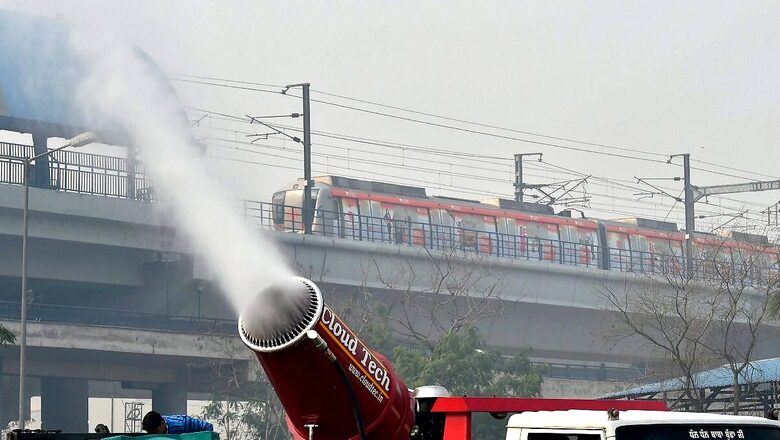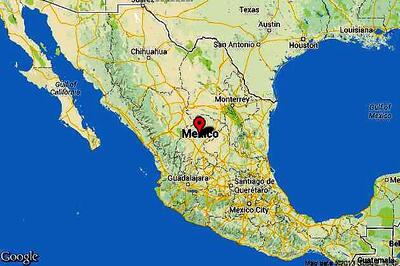
views
The air quality in Delhi remained in the ‘poor’ category for the fifth consecutive day on Friday and is expected to deteriorate further over the weekend. The national capital’s average air quality index (AQI) stood at 249 at 9.30 am, according to the System of Air Quality and Weather Forecasting And Research (SAFAR).
However, several areas recorded their AQI in the ‘very poor’ category, including 320 in Anand Vihar, and 305 in Burari areas.
An AQI between zero and 50 is considered ‘good’, 51 and 100 ‘satisfactory’, 101 and 200 ‘moderate’, 201 and 300 ‘poor’, 301 and 400 ‘very poor’, and 401 and 500 ‘severe’.
Meanwhile, the average air quality in national capital regions also remained in poor category, with AQI in Gurugram’s Teri Gram area recorded at 204, in Faridabad’s sector 11 at 294 in Haryana, while in Uttar Pradesh, Ghaziabad’s Sanjay Nagar at 208 and Noida’s Sector 62 at 253.
Delhi Air Quality
Delhi’s 24-hour average AQI was 256 at 4 pm on Thursday, 243 on Wednesday and 220 on Tuesday.
According to the Centre’s Air Quality Early Warning System for Delhi, the city’s air quality is likely to deteriorate to ‘very poor’ category on Saturday.
Air Quality Likely To Deteriorate
Unfavourable meteorological conditions and a cocktail of emissions from firecrackers and paddy straw burning, in addition to local sources of pollution, push Delhi-NCR’s air quality to hazardous levels around Diwali every year.
According to an analysis conducted by the Delhi Pollution Control Committee, the capital experiences peak pollution from November 1 to November 15, when stubble burning incidents in Punjab and Haryana peak.
Move To Curb Pollution
The Delhi government launched a campaign to curb vehicular pollution on Thursday, a year after Lieutenant Governor V K Saxena put it on hold, questioning its effectiveness. A 2019 study conducted by the Central Road Research Institute showed that keeping engines running at traffic signals can increase pollution levels by more than 9 per cent.
A range of emission inventory and source apportionment studies carried out for Delhi in the past few years suggested that on-road vehicular exhaust emissions account for 9 per cent to 38 per cent of PM2.5 emissions in the capital. Delhi’s air quality had turned ‘very poor’ on Sunday for the first time since May, mainly due to a drop in temperature and wind speed, which allowed pollutants to accumulate.
Delhi Environment Minister Gopal Rai said the government has identified eight more pollution hotspots in addition to the existing 13 in the national capital and special teams will be deployed there to check pollution sources. He said the government has also decided to use suppressant powder to prevent dust pollution in the city.
Dust suppressants could include chemical agents like calcium chloride, magnesium chloride, lignosulfonates and various polymers. These chemicals work by attracting and binding fine dust particles together, making them too heavy to become airborne.
The Commission for Air Quality Management, a statutory body responsible for proactively implementing the pollution control plan known as the Graded Response Action Plan (GRAP), had on Saturday directed authorities in the NCR to increase parking fees to discourage private transport and enhance the services of CNG or electric buses and metro trains amid a likely increase in pollution levels.
This action is part of Stage II of GRAP which is implemented when Delhi’s AQI is predicted to turn ‘very poor’. GRAP categorises actions into four stages: Stage I ‘poor’ (AQI 201-300); Stage II ‘very poor’ (AQI 301-400); Stage III ‘severe’ (AQI 401-450); and Stage IV ‘severe plus’ (AQI >450).
The Delhi government had last month launched a 15-point action plan to mitigate air pollution in the capital during the winter season, with a strong emphasis on addressing dust pollution, vehicular emissions and open burning of garbage.
(With PTI Inputs)




















Comments
0 comment